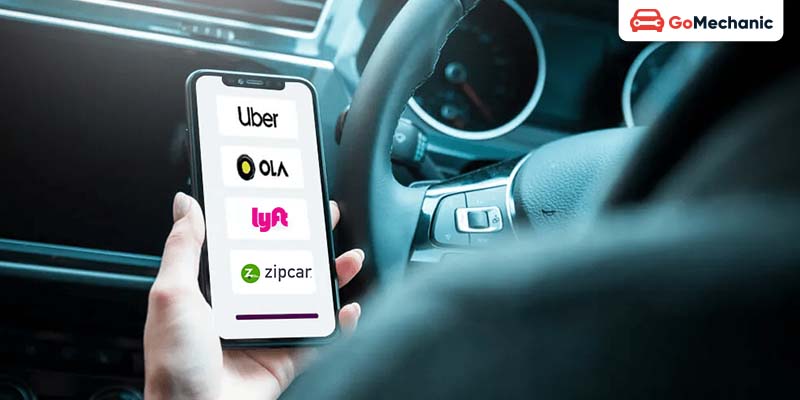In recent years, the concept of car sharing has gained significant traction, offering a new way for people to access transportation. But what exactly is car sharing, and what are its implications for individuals and communities? In this blog, we’ll delve into the pros and cons of this growing trend, exploring its benefits and potential drawbacks.
What is Car Sharing ?
Car sharing is a short-term car rental system accessed via a membership-based platform through websites or apps. This model offers a practical and eco-friendly alternative to owning a car, aimed at reducing urban vehicle congestion and parking demand. Key aspects include:
- Accessibility: Easy access through digital platforms.
- Cost Efficiency: More affordable than owning a car.
- Environmental Benefits: Reduces the number of cars on the road.
- Flexibility: Rent cars when needed without the commitment of ownership.
- Urban Impact: Helps alleviate urban traffic and parking problems.
How Car Sharing Works
Car sharing is a convenient and flexible transportation option that allows individuals to access vehicles for short periods of time without the hassle of ownership. Here’s how it typically works:
Registration Process:
- Create an account: Sign up on the car-sharing service’s website or app.
- Provide information: Input personal details, driver’s licence info, and payment method.
- Verification: Some services may conduct background checks or verification processes.
Booking a Ride:
- Browse vehicles: Use the app or website to see available cars nearby.
- Vehicle details: View information like location, model, availability, and pricing.
- Reservation: Select a vehicle and choose the time and duration for your ride.
Vehicle Pickup:
- Locate the vehicle: Use GPS technology in the app to find the car’s exact location.
- Unlocking: Access the vehicle using the app, often with keyless entry via smartphone.
- Alternative methods: Some services may use physical keys or key cards inside the vehicle.
Vehicle Return:
- Drop-off location: Return the car to a designated spot or zone specified by the service.
- Ending the trip: Use the app to signal the end of your ride and lock the vehicle securely.
- Refuelling (if needed): Some services may require you to refuel the car if the fuel level is low, while others include fuel costs in the rental price.
Popular Car Sharing Apps
Uber:
- Offers ride-hailing services via the app, connecting users with nearby drivers.
- Provides various ride options including shared rides, standard rides, and luxury rides.
- Allows users to track their ride in real-time and pay seamlessly through the app.
- Offers additional services like food delivery (Uber Eats) and package delivery (Uber Connect).
Lyft:
- Functions similarly to Uber, providing ride-hailing services with various ride options.
- Promotes community engagement through its Round Up & Donate feature, allowing users to round up their fare to donate to charitable causes.
- Offers Lyft Line, a shared ride option that matches passengers travelling in the same direction to reduce costs.
Zipcar:
- Allows users to rent vehicles by the hour or day through the app or website.
- Provides access to a variety of vehicles including cars, vans, and trucks, located in designated parking spots in cities and on college campuses.
- Offers a membership-based model where users pay a monthly or annual fee in addition to usage fees.
Ola:
- Popular ride-hailing app in India, offering services similar to Uber and Lyft.
- Provides various ride options including standard rides, shared rides, and premium rides.
- Offers additional features like Ola Rentals for hourly car rentals and Ola Outstation for intercity travel.
BlaBlaCar:
- Connects drivers with empty seats to passengers travelling in the same direction, facilitating carpooling for long-distance rides.
- Allows users to negotiate prices and select passengers based on profiles and ratings.
- Provides a trusted platform with user verification and secure payment options, ensuring safety and reliability for both drivers and passengers.
Pros and Cons of Car Sharing
Car sharing presents a contemporary approach to transportation, offering advantages like cost savings, environmental friendliness, and convenience. However, it also poses challenges worth considering. Let’s delve into the pros and cons of car sharing to weigh its merits effectively.
Pros :
Cost-effectiveness:
- Economical for occasional users.
- Pay only for time used, avoiding ownership costs like insurance and maintenance.
- Access to various vehicle types without upfront purchase.
Environmental benefits:
- Reduces vehicle emissions and environmental impact.
- Decreases total cars on the road through shared access.
- Offers eco-friendly vehicle options like electric or hybrid models.
Convenience:
- On-demand vehicle access, even for short periods.
- Seamless process with mobile apps and self-service.
- Eliminates storage, maintenance, and insurance hassles.
- Provides flexibility with access in various locations.
Cons:
Limited Availability:
- Accessibility issues in smaller or less populated areas.
- Challenges in maintaining vehicle availability in high-demand areas.
Cleanliness and Maintenance Risks:
- Hygiene concerns due to inadequate cleaning between uses.
- Mechanical issues from poor maintenance practices.
Lack of Personalization:
- Inability to customise vehicles to personal preferences.
- Absence of personal belongings and features typically found in owned cars.
Potential Inconvenience:
- Need for trip planning, especially during peak times.
- Return requirements are less convenient than owning a car.
Liability Concerns:
- Uncertainty about coverage in case of accidents or incidents.
- Doubts regarding provider policies and protection.
Limited Long-Term Use:
- Better suited for short-term or occasional use.
- Car ownership or long-term rental is more practical for frequent or extended usage.
Safety Measures in Car Sharing

Safety is a top priority in car sharing. Let’s explore the key measures taken to ensure a secure experience for all users:
Background Checks:
- Screening for Criminal History: Car sharing companies conduct background checks on users to identify any criminal history or driving offences.
- Minimising Risks: These checks help ensure that users with a history of risky behaviour are not granted access to the service, enhancing overall safety for all users and vehicles.
Insurance Coverage:
- Comprehensive Protection: Car sharing services offer insurance coverage for both the vehicle and users.
- Liability Coverage: Users are protected in case of accidents through liability insurance, minimising financial risks.
- Vehicle Protection: Insurance also covers damage to the vehicle itself, ensuring that both users and the company are safeguarded from unforeseen incidents.
User Ratings and Reviews:
- Trust Building: Car sharing platforms implement user rating systems to foster trust within the community.
- Feedback Mechanism: Users can rate their experiences with vehicles and other users, providing valuable feedback on reliability and behaviour.
- Informed Decisions: Ratings and reviews help users make informed decisions about whom to share vehicles with, enhancing overall safety and satisfaction for all participants.
Future of Car Sharing
In the evolving landscape of transportation, the future of car sharing is shaped by two significant trends:
Integration with Public Transportation:
- Easy Choices: Car sharing and public transit work together, giving users more travel options.
- Getting Around: This combo helps people move easily in cities, easing traffic and being kinder to the environment.
- Greener Travel: By mixing car sharing with public transit, cities can encourage eco-friendly ways of getting around.
Technological Advancements:
- Better Experience: New tech like self-driving cars and smart apps make using car sharing more enjoyable.
- Smarter Management: Advanced technology helps companies run their car fleets better, so there are always enough cars when people need them.
- Easier and Faster: From booking with an app to seeing where cars are in real-time, tech makes car sharing simpler, faster, and better for the planet.
Conclusion
Car sharing offers a convenient and eco-friendly alternative to traditional car ownership. While it brings benefits like cost savings and environmental impact reduction, challenges such as limited availability and cleanliness risks exist. However, with advancements in technology and integration with public transit, the future of car sharing looks promising. By addressing these challenges and prioritising safety measures, car sharing can continue to evolve, offering a more sustainable and efficient transportation solution for urban dwellers.






